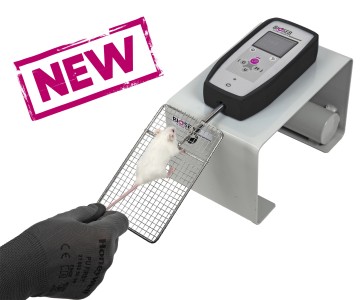Authors
K Kazmierczak, J Liang, CC Yuan, S Yadav, YH Sitbon et al
Lab
Department of Molecular and Cellular Pharmacology, University of Miami Miller School of Medicine, Miami, Florida, USA
Journal
The FASEB Journal
Abstract
Myosin light chain 2 (MYL2) gene encodes the myosin regulatory light chain (RLC) simultaneously in heart ventricles and in slow-twitch skeletal muscle. Using transgenic mice with cardiac-specific expression of the human R58Q-RLC mutant, we sought to determine whether the hypertrophic cardiomyopathy phenotype observed in papillary muscles (PMs) of R58Q mice is also manifested in slow-twitch soleus (SOL) muscles. Skinned SOL muscles and ventricular PMs of R58Q animals exhibited lower contractile force that was not observed in the fast-twitch extensor digitorum longus muscles of R58Q vs. wild-type–RLC mice, but mutant animals did not display gross muscle weakness in vivo. Consistent with SOL muscle abnormalities in R58Q vs. wild-type mice, myosin ATPase staining revealed a decreased proportion of fiber type I/type II only in SOL muscles but not in the extensor digitorum longus muscles. The similarities between SOL muscles and PMs of R58Q mice were further supported by quantitative proteomics. Differential regulation of proteins involved in energy metabolism, cell–cell interactions, and protein–protein signaling was concurrently observed in the hearts and SOL muscles of R58Q mice. In summary, even though R58Q expression was restricted to the heart of mice, functional similarities were clearly observed between the hearts and slow-twitch skeletal muscle, suggesting that MYL2 mutated models of hypertrophic cardiomyopathy may be useful research tools to study the molecular, structural, and energetic mechanisms of cardioskeletal myopathy associated with myosin RLC
BIOSEB Instruments Used
Grip strength test (BIO-GS3)
Source :

 Douleur - Allodynie/Hyperalgésie Thermique
Douleur - Allodynie/Hyperalgésie Thermique Douleur - Spontanée - Déficit de Posture
Douleur - Spontanée - Déficit de Posture Douleur - Allodynie/Hyperalgésie Mécanique
Douleur - Allodynie/Hyperalgésie Mécanique Apprentissage/Mémoire - Attention - Addiction
Apprentissage/Mémoire - Attention - Addiction Physiologie & Recherche Respiratoire
Physiologie & Recherche Respiratoire




































 Douleur
Douleur Système Nerveux Central (SNC)
Système Nerveux Central (SNC)  Neurodégénérescence
Neurodégénérescence Système sensoriel
Système sensoriel Système moteur
Système moteur Troubles de l'humeur
Troubles de l'humeur Autres pathologies
Autres pathologies Système musculaire
Système musculaire Articulations
Articulations Métabolisme
Métabolisme Thématiques transversales
Thématiques transversales Congrès & Meetings
Congrès & Meetings 